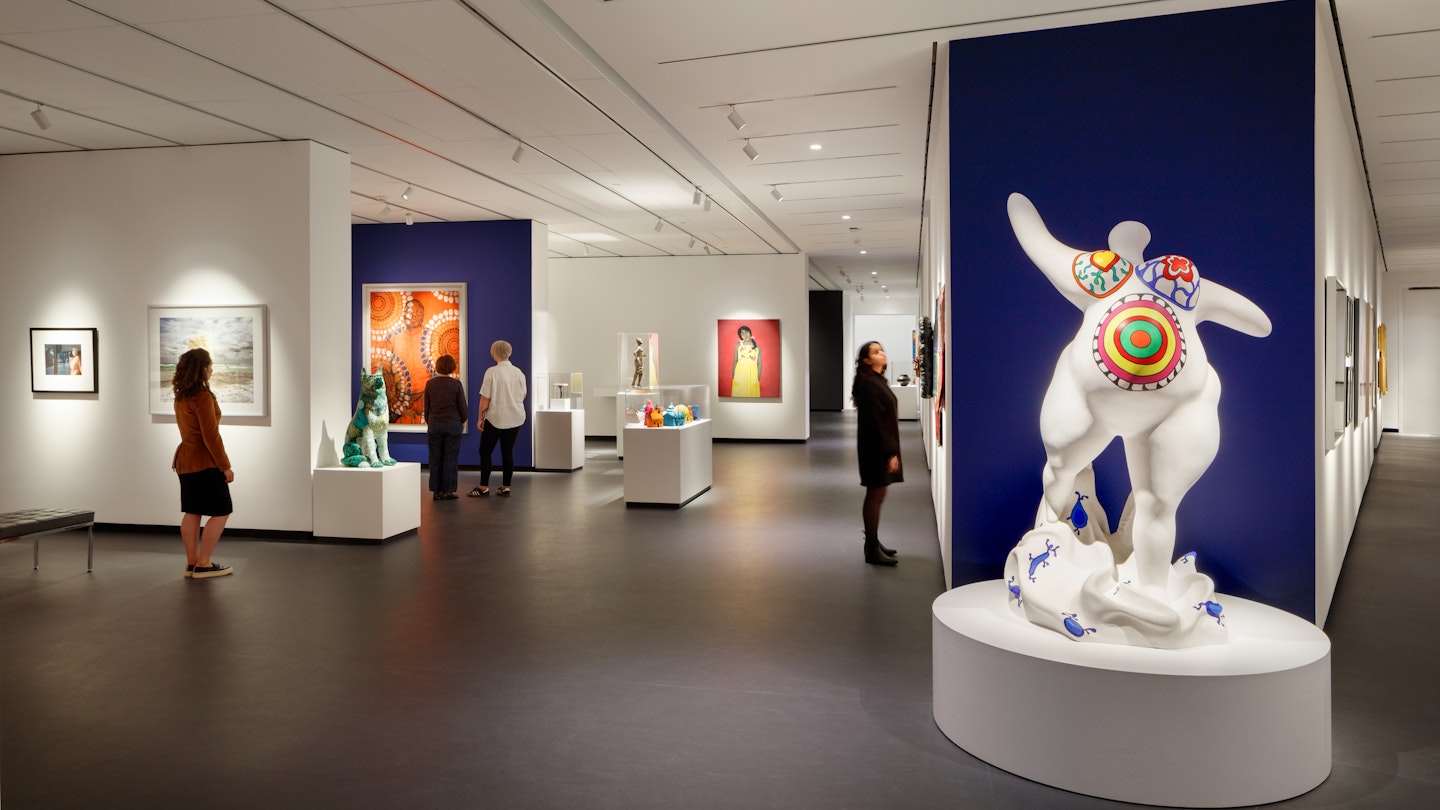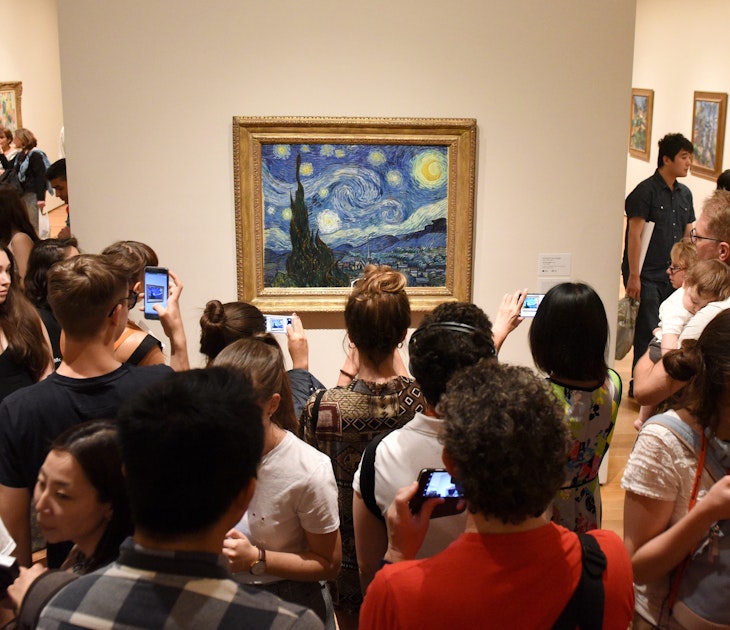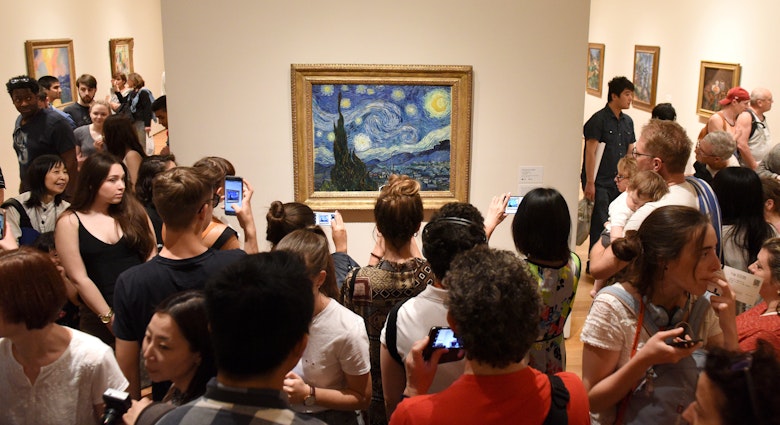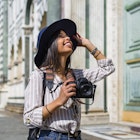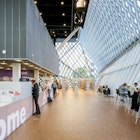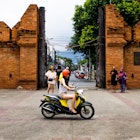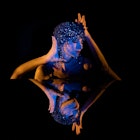It’s a bit ironic that the National Museum of Women in the Arts, the first museum dedicated entirely to female artists and which reopens on October 21, 2023, occupies a former masonic temple once owned by the Freemasons - famous for their refusal to admit women.
Since 1987, this spectacular example of grand revival architecture at 1250 New York Avenue NW has housed some of the world’s most priceless artwork by female artists. The collection’s almost 6,000 works include paintings by Frida Kahlo (the only Kahlo piece on public display in Washington DC), Alma Woodsey Thomas (the first African American woman to have a solo exhibition at New York’s Whitney Museum of American Art), and Mary Cassatt (whose works were inspired by her good friend, the French impressionist Edgar Degas), among many others.
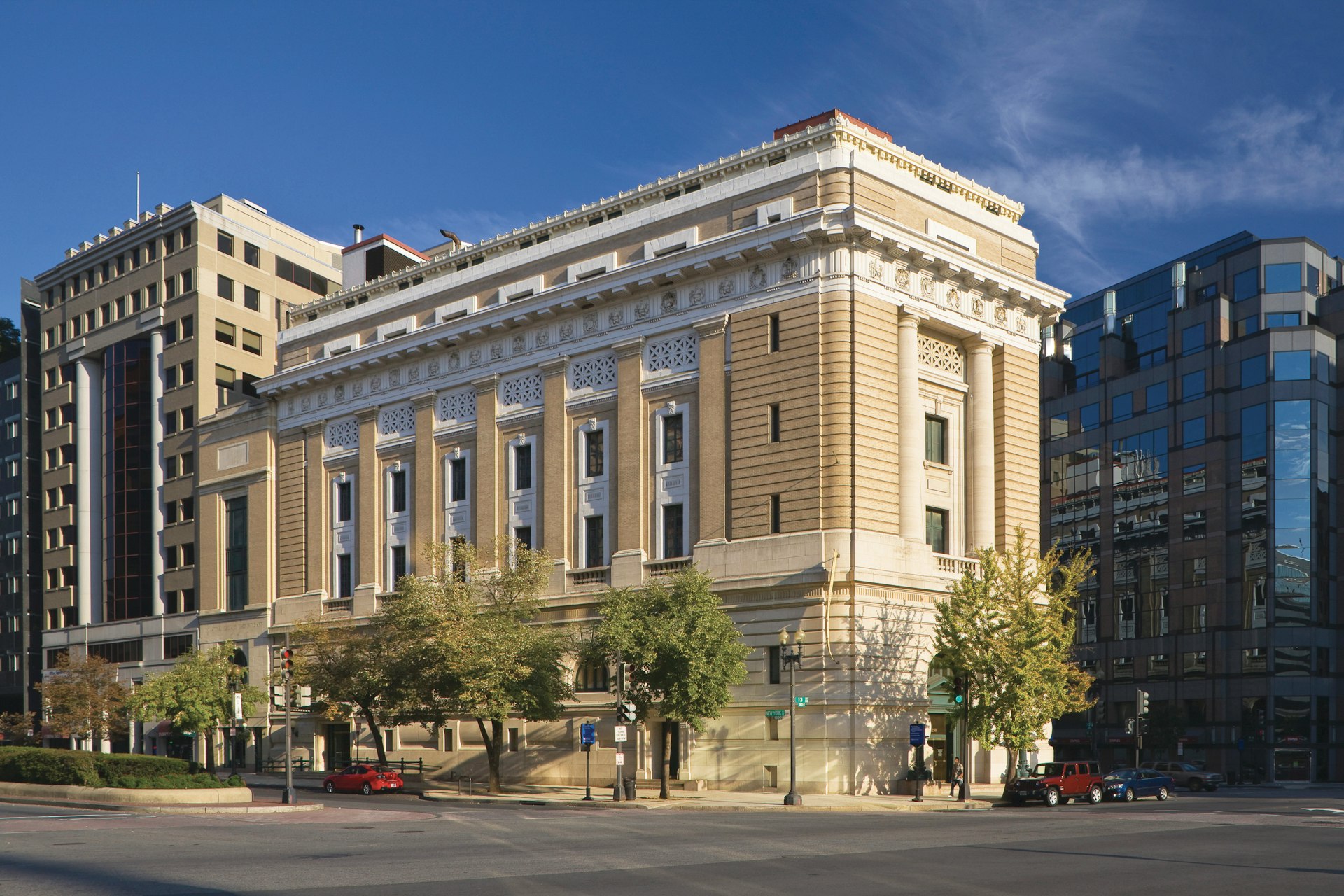
A thoroughly modern makeover
After its $66 million renovation, the museum does more than simply pay its respects to famous female painters – it highlights the sheer diversity of their work, something that wasn’t easily achieved prior to the makeover. After all, art no longer simply hangs from walls: it can inhabit space in different ways. There are drastic changes, too, like walls knocked down to open up galleries, but the smaller changes are just as significant.
Take the addition of more sockets to make it easier to display digital art or the reinforced ceilings that allow for the hanging of large-scale art, such as a suspended installation by Beatriz Milhazes that incorporates acrylic, hand-painted enamel, aluminum, stainless steel, and polyester flowers. The late Niki de Saint Phalle’s Pregnant Nana, which weighs over one metric ton, is on display, too.
Elsewhere, pieces such as Petah Coyne’s sprawling Untitled #1458 (Marguerite Duras) sculpture, which features glass globes, chicken-wire fencing, wire, steel, velvet, Velcro, and plastic, further reflect the gallery’s breadth and enhanced use of space. Overall, the renovations have increased the building’s gallery space by 15 percent, and 40 percent of the items on display haven't been on view before – either here or anywhere else.

There’s a sense of expansiveness throughout the building, parts of which used to be like a “rabbit warren,” said the museum’s senior curator Ginny Treanor, though the former temple’s spectacular architecture is still visible. For example, in the Great Hall - one of the building’s grandest spaces - the original chandelier hangs meters away from a second, very different one made of LED lights, Murano glass, and hand-crocheted wool, by Joana Vasconcelos.
In an effort to increase and enhance context, artworks are no longer confined to being displayed alongside pieces from the same era but rather grouped together by similar subject matter. Frida Kahlo’s Self-Portrait Dedicated to Leon Trotsky will now be displayed in the mezzanine, alongside a collection of self-portraits by other legendary female artists. In this case, it means visitors who might not initially put a gallery of work by mid-19th-century female artists at the top of their list will be exposed to art that might challenge certain preconceptions.
“It offers another ‘in’ for visitors – a way to increase accessibility,” Treanor said. “Hanging things by theme means you’re not bound by chronology. It allows you to make connections between artists and across time periods. It makes it easier to see things differently.”
Other makeover highlights include a state-of-the-art library, a research center, studio space for workshops and masterclasses.

More female-created artwork around DC
Female artists are also highlighted in Beyond Granite, a new series of rotating art exhibitions dotted around the National Mall. The first round of art installations includes site-specific installations by Vietnamese-American multimedia artist Tiffany Chung, who created a map made of rope that shows the routes taken by refugees from the Vietnam War, and Native American artist Wendy Red Star, who created a sculpture resembling a fingerprint as a nod to the Apsáalooke nation chiefs who used their fingerprints to sign treaties that gave their land to the US government.
One of the most striking pieces is Vanessa German’s Of Thee We Sing, which pays tribute to Marian Anderson, a Black American opera singer who performed on the steps of the Lincoln Memorial in 1939 when Washington DC was very much a racially segregated city. Over in Arlington, just across the water from the Lincoln Memorial, Amazon has commissioned several female artists to design pieces for their new corporate headquarters, HQ2, and the leafy new public spaces it has funded.
In a park outside HQ2, for instance, is a piece known as Queen City, by DC-based mixed-media artist Nekisha Durrett. The 35ft-tall, 15ft-wide cylindrical brick installation pays tribute to the former residents of Queen City, a community whose first inhabitants were descendants of Freedman’s Village, a settlement for freed slaves. Queen City was demolished in 1941 to make way for the Pentagon in the heart of Arlington. Durrett’s tower, which members of the public can walk inside, contains 903 teardrop-shaped glass orbs, designed to represent the 903 Queen City residents forcibly relocated without compensation.
Another site putting female artists firmly in the spotlight is the Hotel Zena, a downtown Washington, DC hotel with a female empowerment theme. You don’t need to be a guest to appreciate its art, much of which can be found in the lobby. It’s impossible to miss the enormous portrait of Ruth Bader Ginsburg, for a start. Conceived by artist Andrea Sheehan and produced by Julie Coyle Studios, the piece is made from 20,000 hand-painted tampons.

Elsewhere there are moody black-and-white photos of naked women with slogans related to women’s rights daubed on their bodies, and a wall covered with 8,000 campaign-type buttons worn by protestors at marches and demonstrations for women’s rights (one urges people to “care less about the thigh gap and more about the wage gap”).
Outside the building, an enormous mural, Warrior Gardens, by DC-based street artist Miss Chelove depicts two powerful-looking indigenous women – a piece that honors the bond of sisterhood while celebrating women as leaders.
Miss Chelove’s mural and the Mall’s Beyond Granite installations – pieces deliberately placed in open-air, public places and, in the case of Beyond Granite, displayed alongside detailed information panels similar to the ones you’ll find in the nearby Smithsonian – show how DC’s art scene continues to become more accessible. Other examples include the Smithsonian museums and galleries, which are free to visit.
At the Renwick Gallery, an entire hall has been used to display Janet Echelman’s masterpiece 1.8 Renwick: a vast, backlit expanse of colorful braided fiber that dangles from the ceiling along with projections on the walls. Visitors are encouraged to lie on the polished wooden floor and spend a few moments staring up at the ululating art installation, which is quite hypnotic.
Over at the Smithsonian’s Hirshhorn Museum, Jessica Diamond’s Wheel of Life, on display until June 2024, isn’t just the artist’s largest piece of art to date, but the largest piece ever displayed at this particular museum. It fills the entirety of the museum’s circular gallery and features 15 text-and-image-based artworks, ranging from prose to pithy slogans.
It’s just a few meters from another supersized exhibit, Four Talks by Laurie Anderson, who was invited to create the bespoke, site-specific work at the museum in 2021. For two weeks she daubed lyrics, jokes, quotations, and stories onto the walls of one of the museum’s galleries, creating one of her largest pieces to date.
